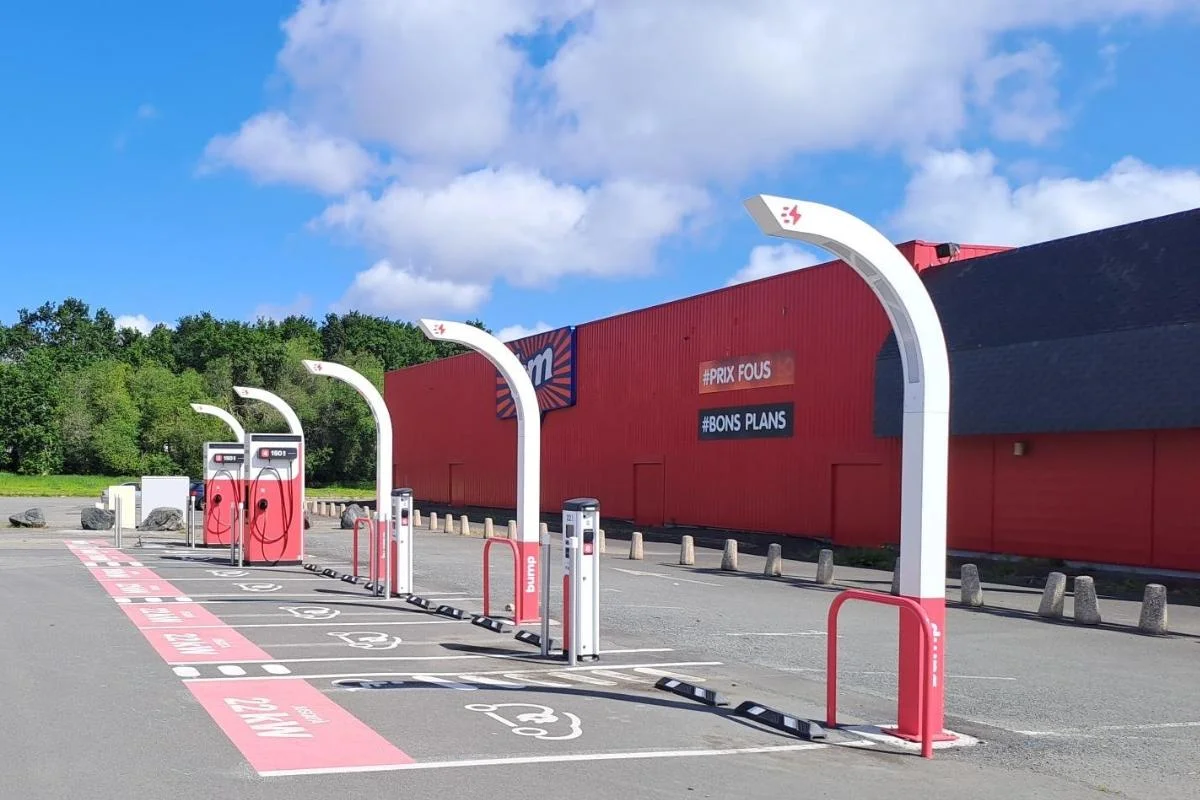Travelling with an electric vehicle should never mean stress or constraints. And yet, for many fleet managers, finding a charging point that is compatible, accessible and activatable with their card can quickly become a headache. This is where an often underestimated strategic lever comes into play: charging point interoperability. This technical but essential concept facilitates access to public infrastructures, streamlines journeys and guarantees a consistent charging experience, regardless of location. At a time when electric mobility is becoming increasingly widespread, understanding the challenges of interoperability is crucial for any company managing an electric fleet.
Interoperability: what exactly are we talking about?
Theinteroperability of charging stations is a fundamental pillar of modern electric mobility. It ensures that users can recharge easily, regardless of network or operator. For companies managing fleets, it's a key factor in simplicity, efficiency... and cost reduction.
A clear definition of interoperability
Interoperability refers to the ability of an electric vehicle to access any public charging station, regardless of operator, thanks to a unified system or agreements between mobility service providers. This means that the driver no longer needs a specific badge for each network, nor to register for a multitude of services.
In practice, this means that you can :
- Use a single recharge card to access several networks;
- Recharge at any interconnected terminal, even outside your usual supplier;
- Centralized billing, with consolidated usage data.
Technology supported by platforms such as GIREVE
One of the main catalysts for interoperability in France is the GIREVE platform, which acts as adata aggregator andintermediary between operators. It enables different networks to share technical, location and availability information, and above all to facilitatecross-activation of charging points.
Thanks to this type of player, the French network of terminals is gradually becoming accessible via a single system, limiting bottlenecks for professional drivers. And in a context where the fleet is a strategic asset, this simplification improves productivity, reduces unscheduled stops and boosts operational reliability.
{{cta-block}}
The technical challenges of charging station interoperability
Behind the promise of seamless, everywhere-accessible recharging,interoperability hides a series of major technological challenges. Enabling a card, application or fleet software to operate on any charging station requires more than a simple connection: it requires a reliable, standardized and interconnected ecosystem.
Communication protocols at the heart of the system
For two systems to "talk" to each other, they need to speak the same language. This is the role of communication protocols, in particular :
- OCPP (Open Charge Point Protocol): used to enable communication between a charging point and a centralized management system;
- OCPI (Open Charge Point Interface): protocol used for data exchange between mobility operators and terminal operators;
- eMI3: a standard designed to standardize data formats in European electric mobility.
Without these protocols, it' s impossible to guarantee that charging can be triggered, billed or that data will be correctly transmitted. Interoperability therefore relies on rigorous technical standardization, without which networks would remain compartmentalized.
Cybersecurity and data reliability
Another major technical challenge is the security of data exchanges between the various players involved in recharging. When a company manages a fleet using supervision software, it needs reliable data in real time: status of charging stations, availability, rates, charging history...
Interoperability must ensure that this information is accurate, synchronized and protected against the risks of piracy or transmission errors. Players like GIREVE and the major recharging operators are investing heavily to make these exchanges more reliable and guarantee a high level of service to professional users.
In short, interoperability isn't just about user comfort. It's a challenge of digital architecture, IT security and large-scale compatibility. For fleet managers, it's a strategic criterion when choosing operators and charging solutions.

The concrete benefits of interoperability for businesses
For companies operating a fleet of electric vehicles, interoperability of charging stations is not just a luxury: it's an operational necessity. It represents an immediate gain in efficiency, simplicity of management and budget optimization.
Smoother, more predictable fleet management
One of the major obstacles to fleet electrification remains the complexity of accessing public charging stations. With properly implemented interoperability, drivers can :
- Recharge everywhere with a single card or app, without having to juggle between several operators;
- Avoid blockages due to non-compatible, unavailable terminals or terminals reserved for a closed network;
- Plan their journeys more serenely, with the certainty of having terminals accessible all along the route.
This translates into less stress for drivers, fewer logistical hitches, and greater route reliability, even over long distances.
Centralized management and simplified billing
Thanks to interoperability, companies can centralize charging data, even when using multiple networks. This enables :
- Consolidated billing, with a single mobility operator managing all transactions;
- A detailed cost analysis by vehicle, driver or mission;
- Detection of anomalies or behaviors to be optimized (excessively long stopping times, over-priced terminals, etc.).
With partners like Bump, fleet managers can go even further: real-time supervision, customized dashboards, integration into existing fleet management tools. Bump acts as an orchestra conductor for recharging, guaranteeing consistency between usage in the field, back-office data and profitability issues.
In short: interoperability gives companies a 360° view of their refueling strategy, enabling them to gain greater autonomy, control and performance.
{{cta-block}}

Need to take your park to the next level?
Discover our turnkey supervision offer today!


